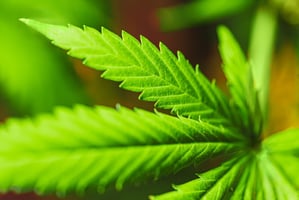Adolescent Marijuana Use May Rise Following Legalization of Drug for Recreational Use
 |
The findings raise questions about how the legalization of marijuana for adult recreational use might change behavior in adolescents.
For the study, Magdalena Cerdá, Dr.P.H., M.P.H., of the University of California Davis School of Medicine and colleagues analyzed survey data from 253,902 students in eighth, 10th, and 12th grades from 2010 to 2015 in U.S. schools. The authors compared changes in past-month marijuana use and perceived harmfulness of marijuana use in Washington and Colorado prior to recreational marijuana legalization (2010-2012) with post-legalization (2013-2015) and compared these findings with trends in states that did not legalize recreational marijuana use.
In Washington, marijuana use increased 2.0% and 4.1% among eighth and 10th graders, respectively, from 2010-2012 to 2013-2015 while perceived harmfulness declined by 14.2% and 16.1%. In contrast, among states that did not legalize recreational marijuana use, marijuana use decreased by 1.3% and 0.9% among eighth and 10th graders, respectively, while harmfulness decreased by 4.9% and 7.2% over the same period. These trends were significantly different from those seen in states that did not legalize marijuana. No changes were seen in marijuana use or perceived harmfulness among Washington 12th-graders or students in the three grades in Colorado.
“Although further data will be needed to definitively address the question of whether legalizing marijuana use for recreational purposes among adults influences adolescent use, and although these influences may differ across different legalization models, a cautious interpretation of the findings suggests investment in evidence-based adolescent substance use prevention programs in any additional states that may legalize recreational marijuana use,” the authors concluded.
“Differences in overall use rates before and after changes in legal status, while important and perhaps the easiest change to monitor, are but one aspect of the marijuana use puzzle that merits study,” wrote JAMA Pediatrics Associate Editor Alain Joffe, M.D., M.P.H., of Johns Hopkins University in a related editorial. “Changes in who uses and how frequently use occurs also merit careful assessment. Data from the study by Cerdá et al suggest increases in use were limited to younger (eighth and 10th grade) compared with older (12th grade) adolescents in Washington; this is particularly worrisome, as the adverse effects of marijuana use are generally believed to be greater for younger teenagers, especially those younger than 16 years.”
For related information, see the Psychiatric News article “What You Should Know About Marijuana Use in the United States,” by Michael T. Compton, M.D., M.P.H., chair of the Department of Psychiatry at Lenox Hill Hospital in New York and a professor of psychiatry at Hofstra Northwell School of Medicine.
(Image: iStock/francisblack)





